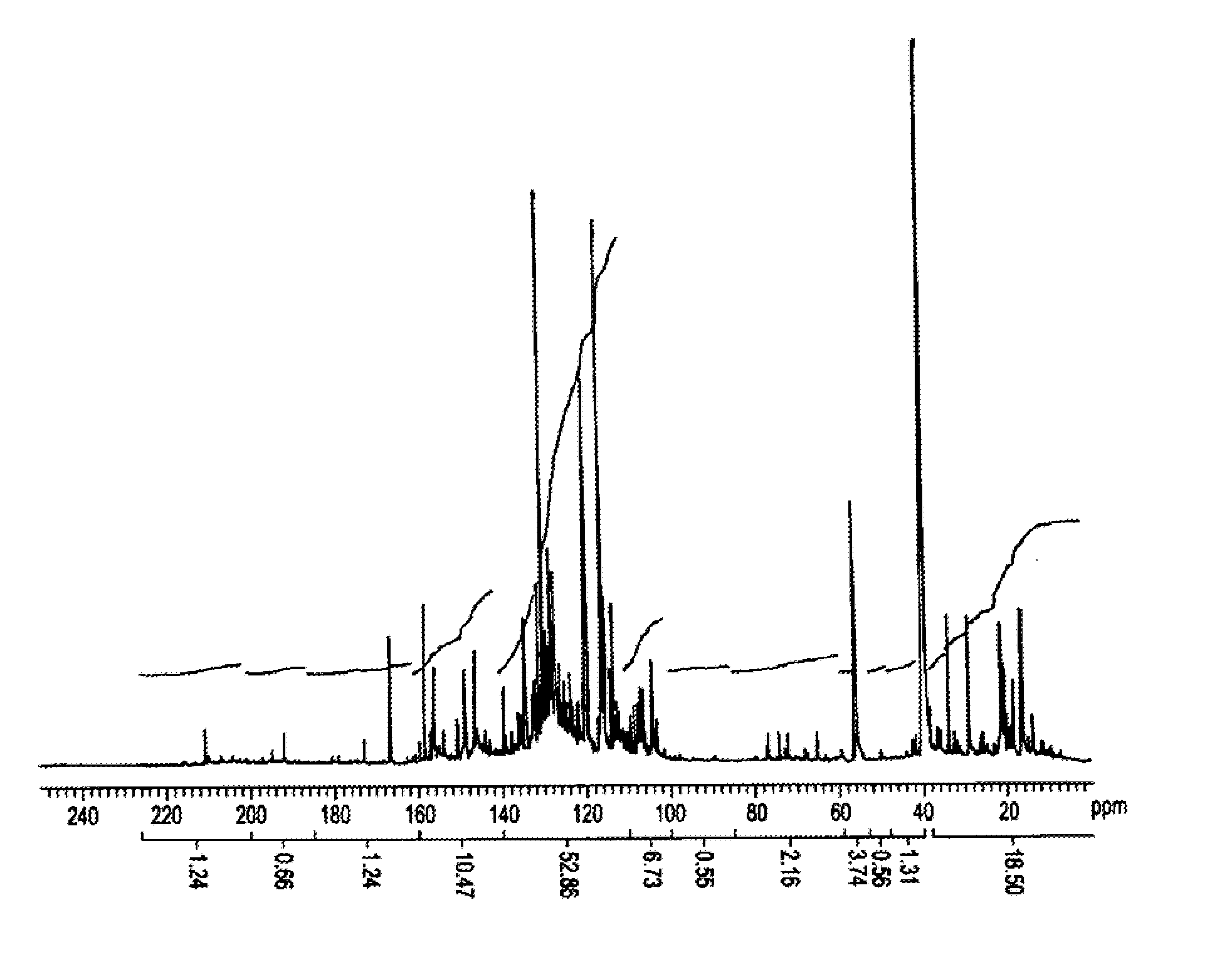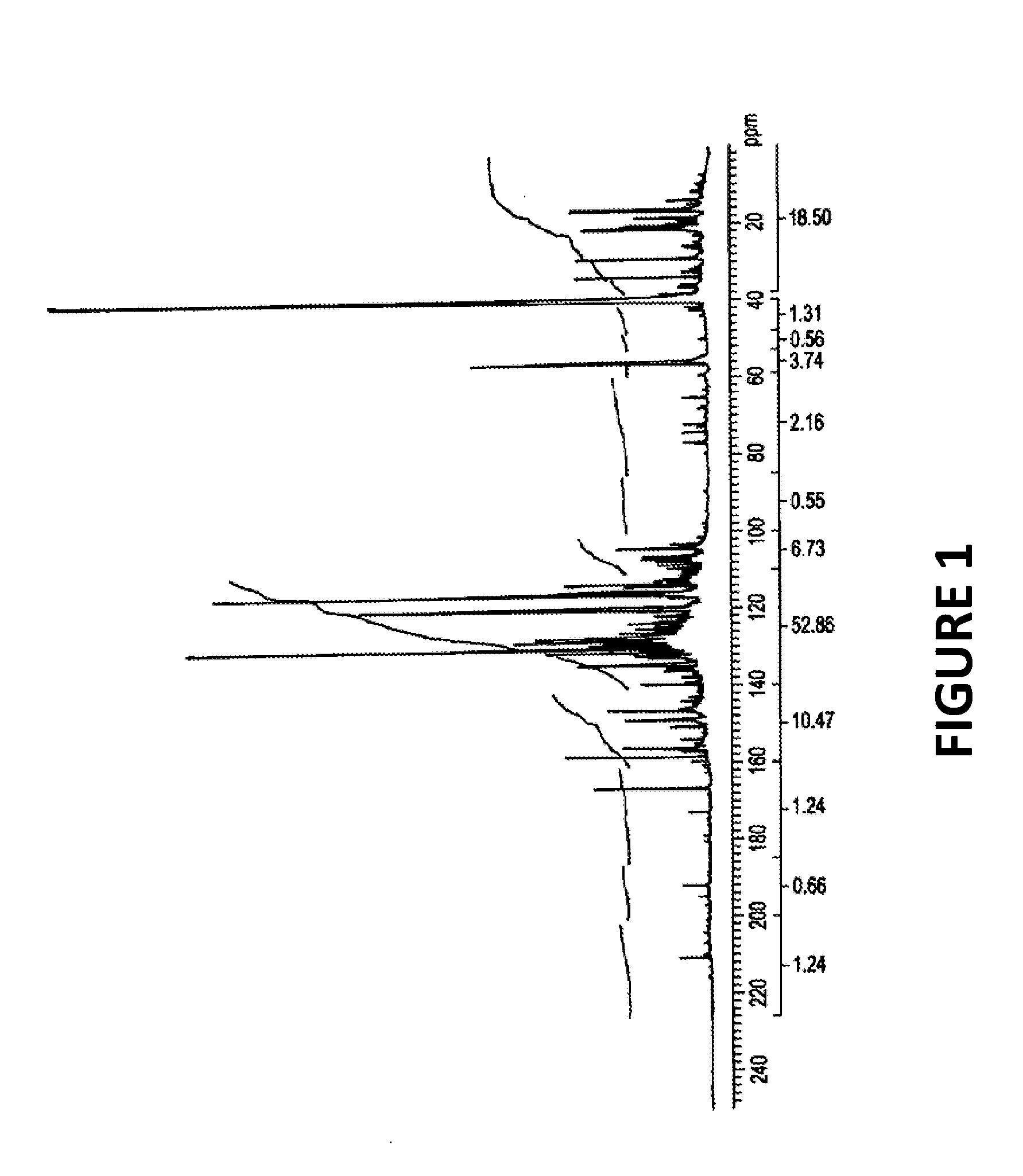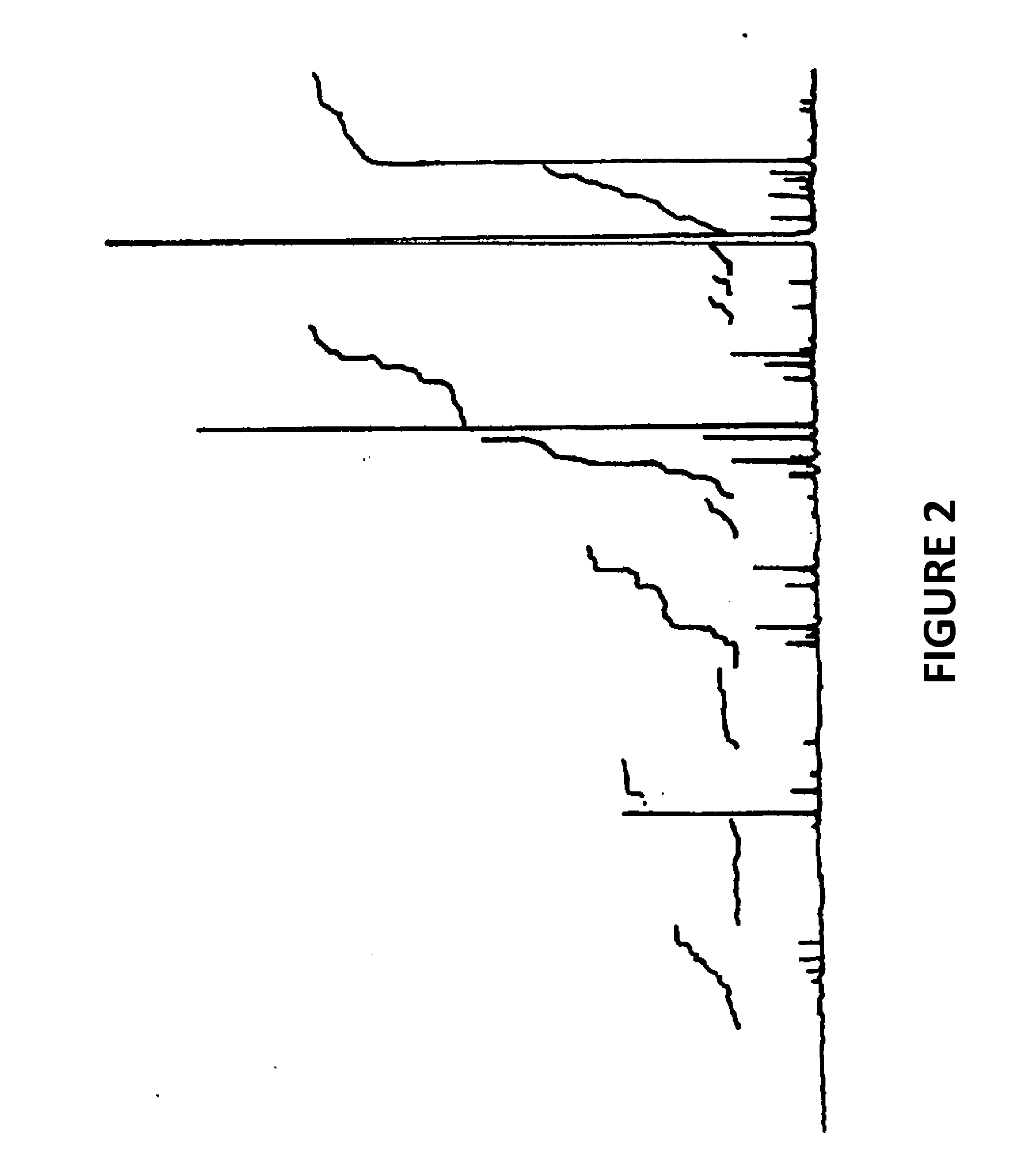Production of pyrolysis oil
a technology of pyrolysis oil and pyrolysis oil, which is applied in the direction of hydrocarbon oil treatment products, waste based fuels, physical/chemical process catalysts, etc., can solve the problems of increasing the cost of the final product, unable to be used for most biobased products and fuel applications, and poor stability of biocrude oils, so as to eliminate the need for further processing steps and improve stability.
- Summary
- Abstract
- Description
- Claims
- Application Information
AI Technical Summary
Benefits of technology
Problems solved by technology
Method used
Image
Examples
example 1
Preparation of Feedstocks and Catalyst
[0055]The feedstock used for this experiment was a hybrid poplar whole wood ground in a Wiley mill (model 4) to pass a 1-mm screen. The moisture content of the feed was 5%. A proprietary catalyst (VPISU-001-H-ZMS-5 zeolite from Exxon Mobil of Irving, Tex., which was modified to suit the pyrolysis conditions) was used for the runs. Two hundred gram batches of this catalyst were used for the fluidized bed pyrolysis experiments.
[0056]The reactor consisted of a 50 mm (2-in) schedule 40 stainless steel pipe, 500 mm (20 in.) high (including a 140-mm (5.5 in.) preheater zone below the gas distribution plate) and equipped with a 100-μm porous metal gas distributor. The fluidizing medium was the above proprietary catalyst, and the bed was fluidized with nitrogen. The reactor was externally heated with a three zone electric furnace. The reactor tube contained a bubbling fluid bed with back mixing of the feed and catalyst.
[0057]The b...
example 2
Materials
[0092]Logs of hybrid poplar wood were first disc ground to a course fraction, air-dried at ambient laboratory temperature to equilibrium moisture content and then knife milled (Wiley mill model 4) until all the particles passed through a 1-mm mesh screen. The moisture contents of the materials were determined using an infra-red moisture analyzer. Granular HZSM5 supplied by BASF Inc. (BASF Inc, Florham Park, N.J.) was used for the pyrolysis studies.
[0093]The ground biomass material (4200 g) was loaded into a K-Tron gravimetric feeder hopper and fed into a 2 kg / h bubbling fluidized bed pyrolysis reactor containing the catalyst as the fluidizing medium. The fractional catalytic pyrolysis was conducted at a temperature of 450-500° C. using ZSM5 catalyst. The 10 cm bubbling fluidized bed reactor was charged with 1 kg of catalyst. The bed was initially fluidized with 2 SCFM of nitrogen but was replaced gradually with the producer gas from the catalytic pyrolys...
example 3
Multi-Catalyst Pyrolysis Experiments
[0101]The goal of the multi-catalyst experiment was to load two catalysts into the fluidized bed reactor and fluidize them independently because of differences in their densities and particle sizes. The independently fluidizing catalysts will catalyze different reactions and improve the quality and stability of the pyrolysis oil products. Because the sand is denser than the FCC and other catalysts, the sand fluidizes independent of the other catalysts. These fluidization regimes were initially demonstrated in a cold flow pyrex glass fluidization reactor.
[0102]Following the cold flow experiments, the reactions were conducted in a single stage fluidized bed pyrolysis reactor using hybrid poplar wood samples. The hybrid poplar wood samples were ground in a Wiley mill until all the material passed through a 1 mm mesh screen. The elemental composition of the poplar wood is shown in Table 6. Proprietary fluid cracking catalysts (FCC) were supplied by BA...
PUM
| Property | Measurement | Unit |
|---|---|---|
| Temperature | aaaaa | aaaaa |
| Temperature | aaaaa | aaaaa |
| Fraction | aaaaa | aaaaa |
Abstract
Description
Claims
Application Information
 Login to View More
Login to View More - R&D
- Intellectual Property
- Life Sciences
- Materials
- Tech Scout
- Unparalleled Data Quality
- Higher Quality Content
- 60% Fewer Hallucinations
Browse by: Latest US Patents, China's latest patents, Technical Efficacy Thesaurus, Application Domain, Technology Topic, Popular Technical Reports.
© 2025 PatSnap. All rights reserved.Legal|Privacy policy|Modern Slavery Act Transparency Statement|Sitemap|About US| Contact US: help@patsnap.com



